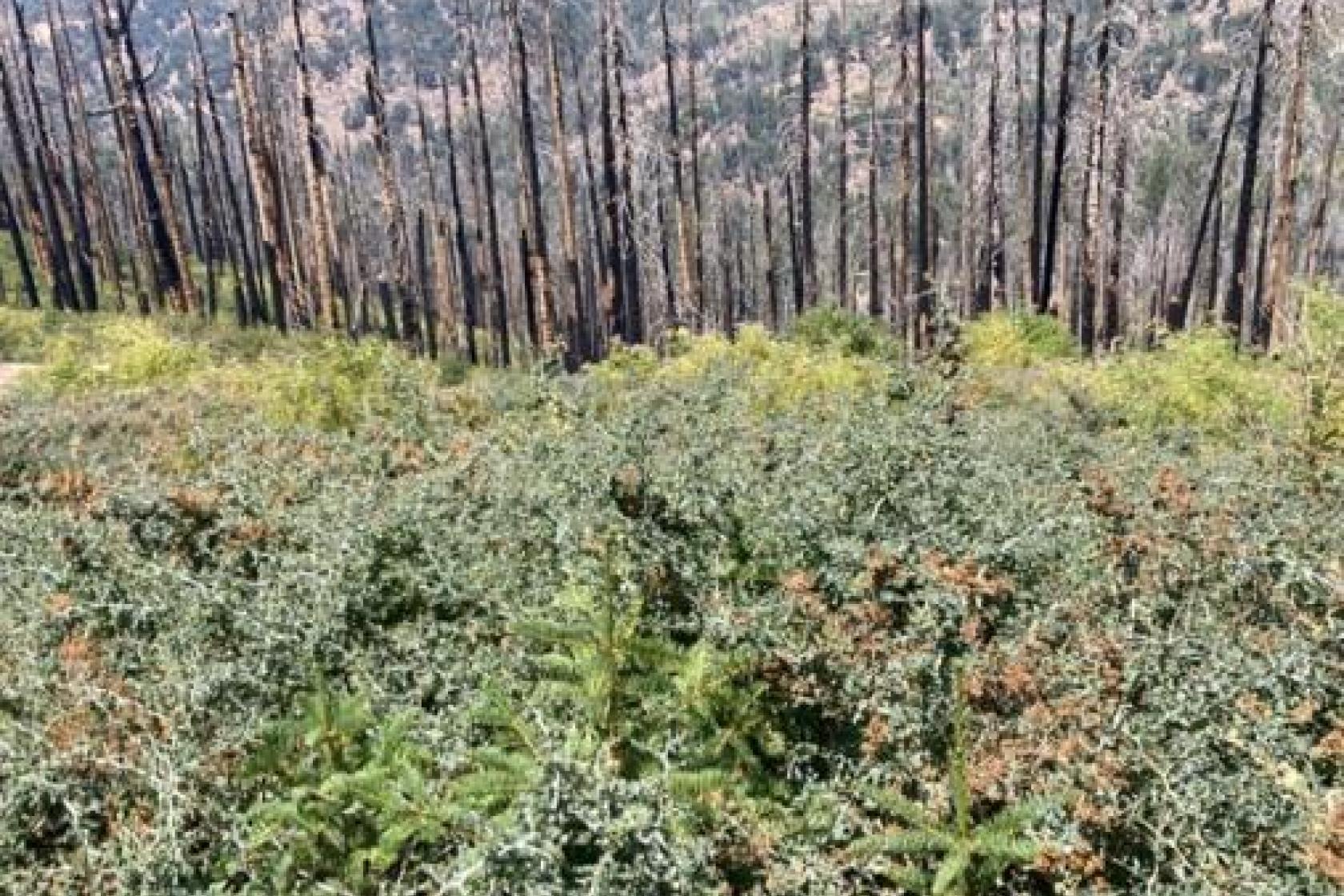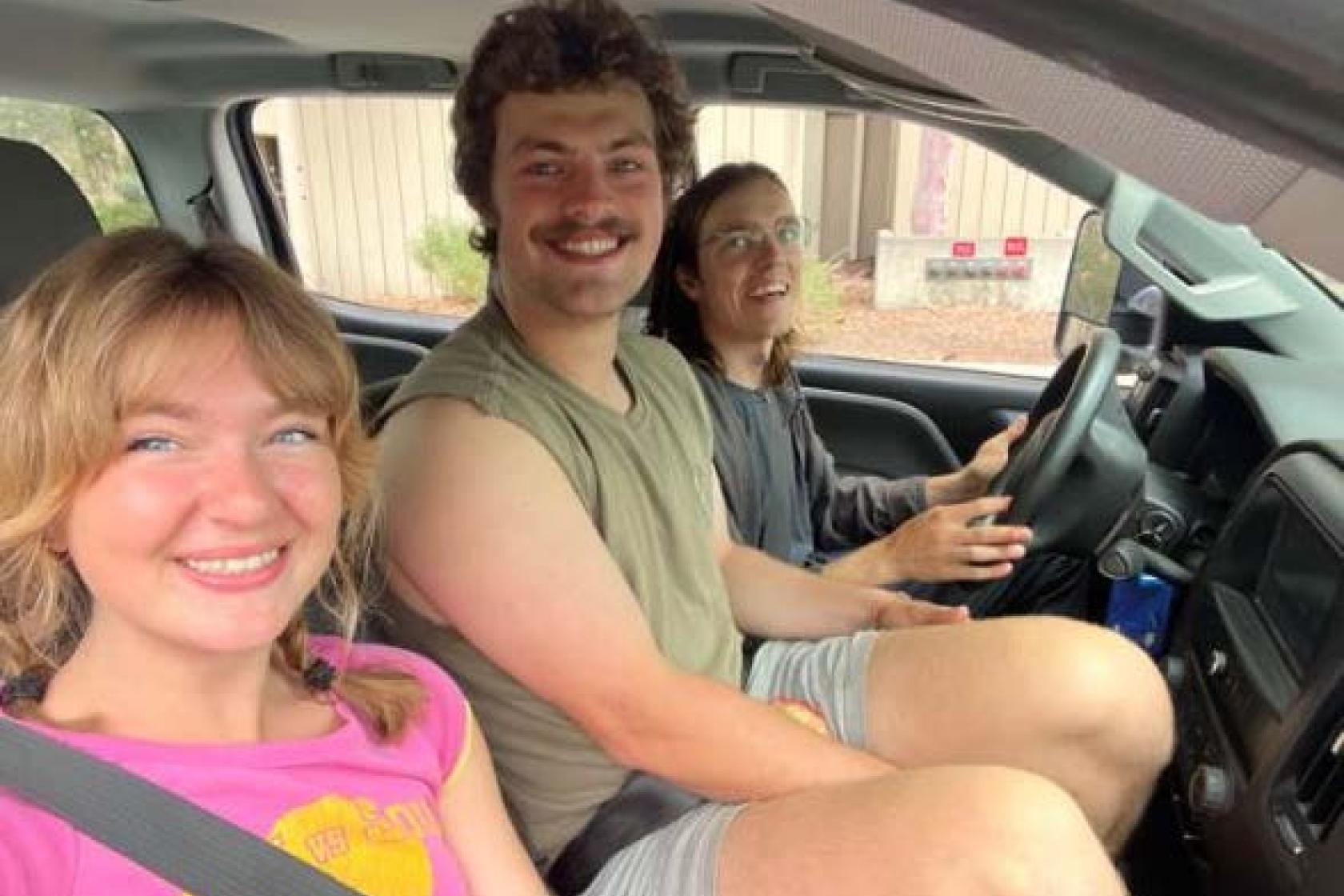Photos of areas burned at high severity (in the Rough Fire, Giant Sequoia National Monument).
TPS Supports Graduate Fieldwork in the Sierra Nevadas

This summer, we spent about 35 days – spread across six trips – doing field work in the Sierra Nevadas. We went to five separate fires as far north as the Rim Fire in Stanislaus National Forest and Yosemite National Park and as far south as the Piute Fire in Sequoia National Forest.
At each fire, we visited up to 45 sites and collected data on what types of plants were present 9-15 years after an area was burned at a high severity (i.e., to the point where the forest that existed prior to the fire was completely absent on the landscape after the fire burned, and all or almost all of the conifer trees were dead) and, more specifically, how many conifers are establishing on the post-fire landscape. Over the course of the summer, we gathered data from about 140 sites, and we plan on using this data to train predictive models to inform land managers on what treatments may be necessary to facilitate post-fire recovery of conifer forests. With the number of large fires burning through the Sierras increasing and the conifers’ ability to re-establish themselves decreasing (i.e., due to increased drought and heat stress), researchers in land management organizations (e.g., US Forest Service) have ensured us that our work will be applicable and useful when planning post-fire reforestation projects.
Above, ‘we’ refers to my summer field crew and me. We named our team ‘Shrub! Meet Foot’ to account for the number of times we had to trudge through dense shrubs to reach our sites from the nearest USFS road. Notably, this project marked the first field work experience for four separate undergraduates including Will Rice and Caitlin Berry (pictured below) who accompanied me on every trip and Sofia Benitez and Steven Le who split their time between my project and another field project that other members of the LEAF Lab led. Speaking from my own previous experiences as an undergraduate researcher at UCSB, field work was transformative and eye-opening and helped confirm that I wanted to pursue a career researching fire ecology and landscape ecology. Although it may be unrealistic to think that this summer’s field work was equally as beneficial for Will, Caitlin, Sofia, and Steven, I would like to think that it was an enriching experience.
The work that we conducted would not have been possible without the rental pickup truck provided to our team by TPS. I specifically selected sites that were less than 500m away from the nearest road; however, most of these roads were under-maintained and sometimes incredibly narrow US Forest Service roads. The Piute fire near Piute Peak was perhaps the best example of this, where we relied entirely on unpaved USFS roads and we were over an hour away from any paved road the entire trip.
The vehicle’s (truck 8057, a Chevy Silverado) high clearance and large tires were vital as large rocks poking through the dirt road and washouts were a frequent sight. Furthermore, having sufficient space to store our field gear and our camping gear was crucial.
All-in-all, having the ability to safely and confidently drive along USFS roads allowed this research to proceed. If we were to restrict our driving to paved roads, we would not have been able to access more than 80% of the sites that we selected (and we would not have been able to access the Piute Fire at all). Admittedly, sometimes the truck did not get us all the way to our sites and we had to hike a little bit along USFS roads.
Lastly, I’d like to thank Wendy Devlin, and the rest of the TPS staff as you all were always very kind, helpful, and provided clear instructions.
Thank you to Joe Celebrezze, Graduate Student in the Landscape Ecophysiology and Function (LEAF) Lab, Ecology Evolution and Marine Biology (EEMB) Dept., UCSB. He submitted this article to the TPS team and was gracious enough to allow us to repost here!





